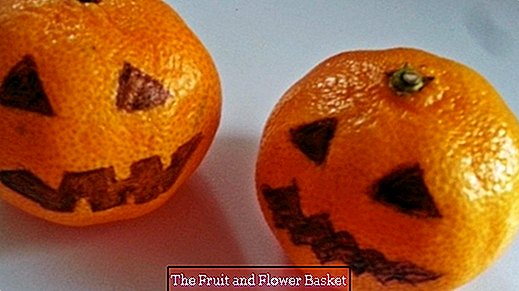Halloween - sweets, otherwise there's an acid!
A few days ago, I sat at the bus stop and heard two elderly ladies talking. One excited about the "hype" at Halloween time. The other one said: There never was anything like that before, the "Schmarrn" (nonsense) comes from America to us and I remembered when I was little, there was really no such thing, because that I could remember. After all, it's all about sweets and disguise and that's just for us at carnival.
No, the ladies were right, that certainly comes from America, you can see in many American films. But at home then it left me no peace, my daughter has been celebrating for years always Halloween parties and went when she was still small with her friends from house to house. I decorate with Halloween decoration the apartment, somehow the custom has crept in with us and just heard a long time. Eventually, curiosity overcame me, so I made a little clever about Halloween. I especially liked an article that I read from the journalist Bettina Lehner.
Soon it will be time again! Halloween is approaching
On the 31st of October, many disguised children, adolescents and adults will once again be seen on the streets. But what exactly does it have with the costumes, squash and Co. on it? So I figured Halloween is not from the United States!
The origin:
For all those who want to score with knowledge at the next Halloween Party: The word halloween, in older spellings (halloween) is a contraction of All Hallows Ève and names the day before All Saints as on Christmas Eve (in English: Christmas Eve). In fact, the tradition of Halloween is not American, as many people believe. It most probably names the folk customs in the evening and the night before the Solemnity of All Saints, from October 31st to November 1st. This tradition was originally widespread in strictly Catholic Ireland. With the numerous Irish emigrants in the 19th century, the tradition of Halloween came to the United States and gradually integrated into the customs of this ethnic group.
What's up with the pumpkins?
The custom of setting up pumpkins for Halloween is also from Ireland. Legend has it that the villain Jack Oldfield lived there. He caught the devil by a cunning and would only release him if he no longer no longer gets in the way of Jack-O. After his death, Jack -O did not go to heaven because of his actions, but of course Jack was not allowed to go to hell because he had betrayed the devil. But the devil took pity and gave him a turnip and a glowing coal so Jack could wander through the dark. The origin of the illuminated pumpkin was therefore an illuminated turnip, but as pumpkins were available in large quantities in the US, one simply hollowed out a pumpkin, this pumpkin had since been known as Jack Oldfield's lantern to scare off evil spirits, that's why carved grimaces.
Why do you dress up on Halloween?
One assumption is that the custom goes back to the 5th century BC. The Celts celebrated Samhain (their New Year's Eve) on the night of November 1, believing that the dead on that day were trying to steal the souls of the living. To counteract this, they disguised themselves so that the dead did not recognize them.
Where does the saying "sweet, otherwise give"?
This comes from the Catholic Ireland of the 11th century. On All Souls' Day, the beggars were given sweet bread to pray in exchange for the souls of the deceased.





